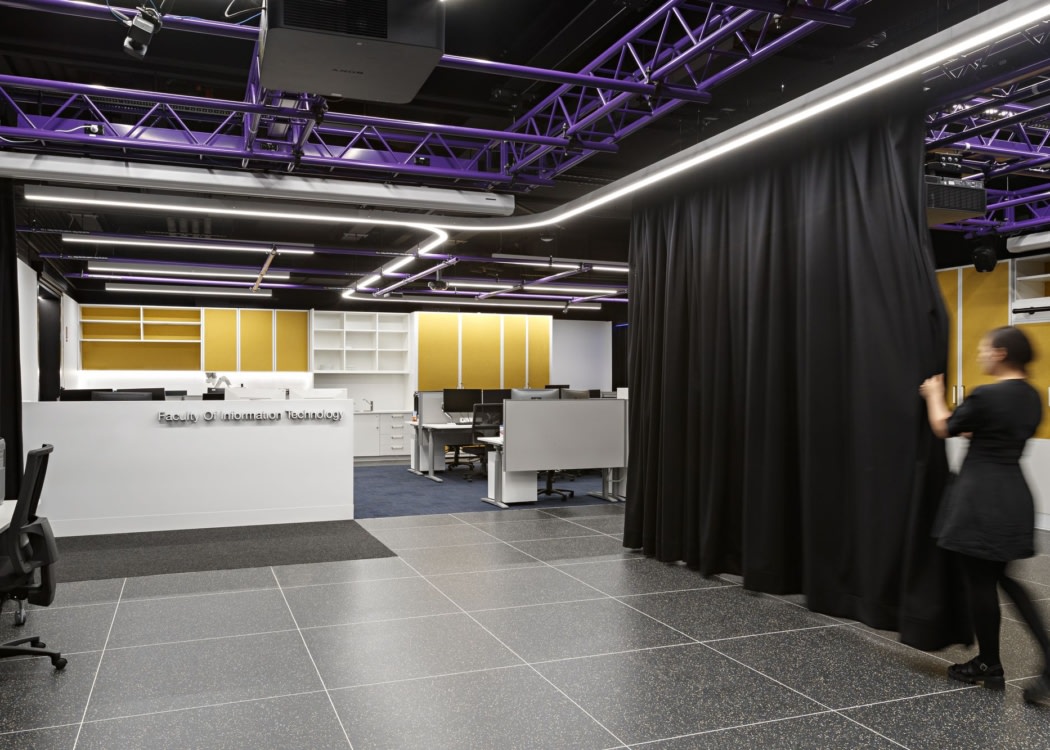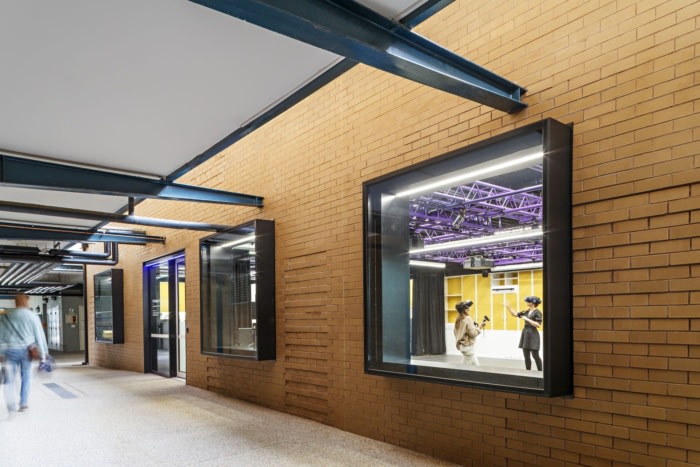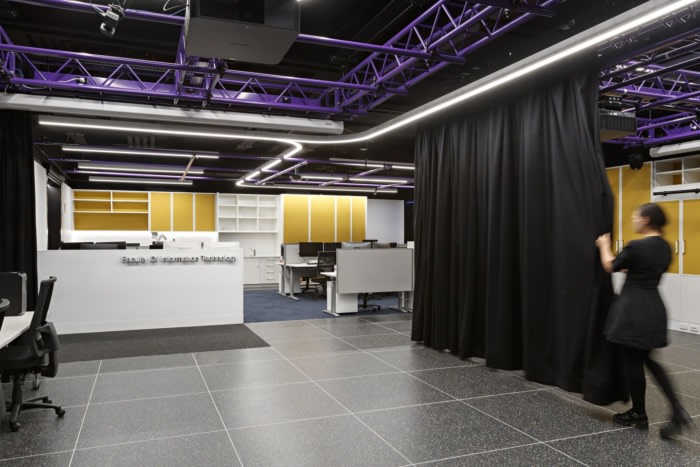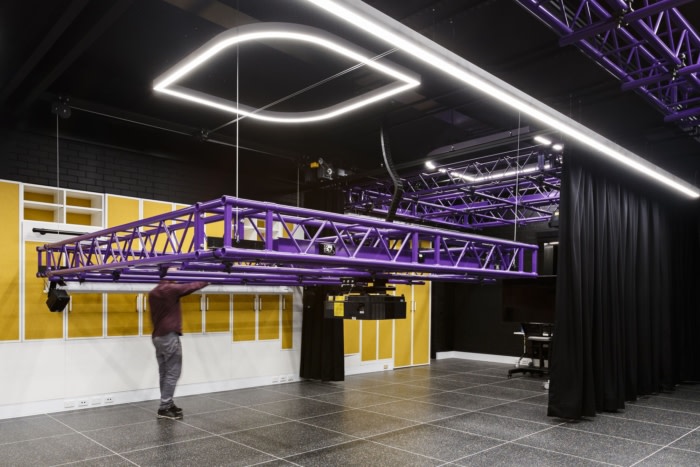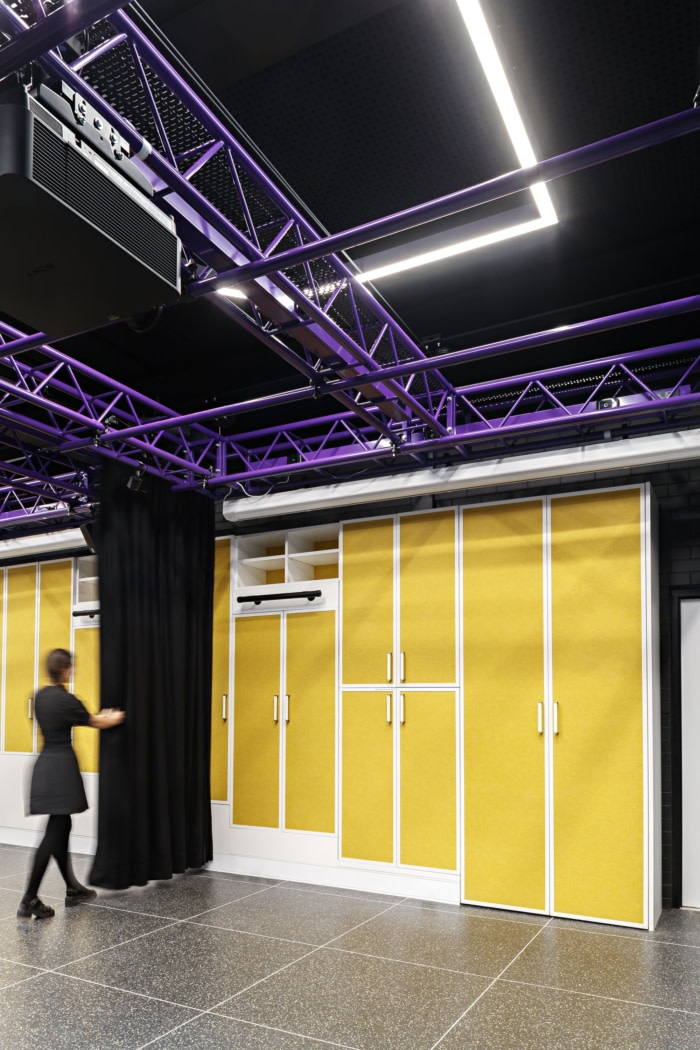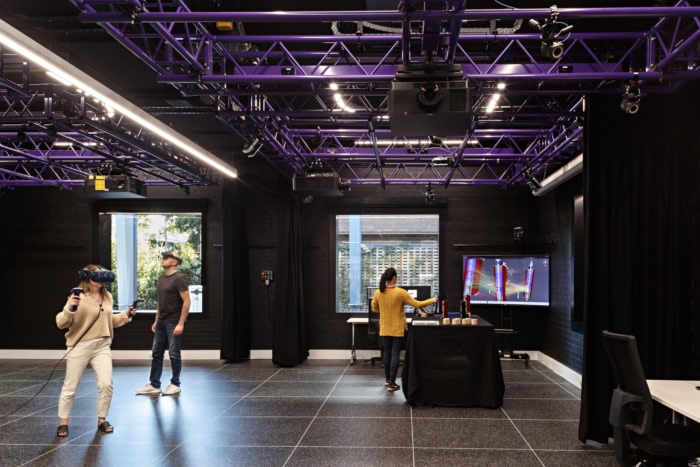Monash University – IT Research Facility
DS Architects designed a smart reworking of old lecture theatres to create a high-tech IT research facility showcasing new virtual reality technology in Clayton, Australia.
The IT Research facility is a smart reworking of old that showcases new, cutting-edge virtual reality (VR) technology for students and the broader university community.
The project is part of a large relocation of the Faculty of IT from the Caulfield campus to the Clayton campus, and transforms two disused lecture theatres in the university’s engineering precinct. Merging together, the theatres give rise to a series of spaces designed for purpose-built, 3D motion capture, and relevant support areas.
The core idea was to create high tech environments to support the faculty’s VR research, in keeping with the ideals expressed in the Monash University Masterplan. We took this a step further, by making the act of research visible through thoughtfully conceived design.
Our design punctuates the facade with a series of large, square windows to the north and west. Rather than simply looking at a glorified façade, passersby are invited to peer into the windows, which reveal the VR zones and research in action, akin to a shopfront display.
The fenestrations are strategically placed along a primary circulation path, after analysing the way people move around the site. For example, the west side attracts the most traffic, so the VR spaces were placed on this side. Metal shroud shopfront windows signify the new work and enable ‘Research on show’, also in line with the University’s Masterplan.
The design process included a careful study of existing VR reality environments, including a PHD research space and existing VR space at Caulfield as well as the biomechanics research space at Deakin University.
After experimenting with many different design iterations, our response was to design a large virtual reality testing zone to the west of the building. This could be split into four smaller zones, providing the flexibility to create different environments required to conduct a mix of research and data collection.
During construction, the tiered concrete lecture theatres were stripped out and half of the ceiling above the VR zones was fitted with highly specialised overhead motorised grids. Attached to the grid is a series of mounted motion tracking cameras, as well as provision for speakers, projectors, light and additional tracking cameras.
Accordingly, the grids required precise and additional bracing and bracing points. This was important to ensure that they are stable while the cameras are in use for precise in motion capture. The grids can also be brought up and down to rearrange the cameras, to suit research requirements.
As demands on the building also change, the research facility is future proofed. The open plan office space is designed to allow the refit of additional VR space, which can flex and grow with the facility. Colour and modern features include delicate detailing of a new trellis for planting, while for occupants, the new windows provide access to natural light lacking in the former theatres.
As much as this project is about the future, it also pays homage to the past. The brickwork façade was treated carefully and deliberately with a heritage approach, and retained to not only minimise waste, but also to bring a unique design element to the project. This is highlighted by deliberate, staggered brick detail showcasing previous doorways, signifying the past life of the building.
Together, the old and new elements create a building that sparks conversations and interest by those who walk by. Located within the engineering precinct also means greater opportunities for cross-disciplinary interaction between the faculties, a third ideal of the masterplan.
At heart, this is a building that delivers on the university’s vision to be a leader in education and research. In doing so, we are proud to contribute a building at the forefront of the university’s future, which is supporting the best and brightest technology minds in Australia.
Design: DS Architects
Photography: Michelle Williams

